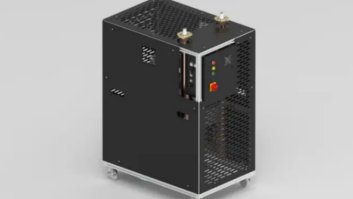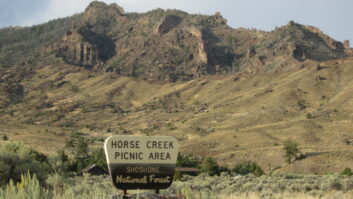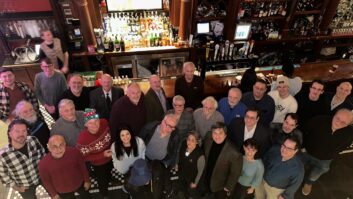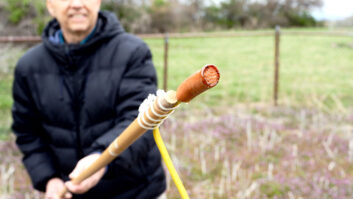Frequency Fees Are Part of Plan For Utah Olympics
WASHINGTON At the upcoming 2002 Winter Olympic Games in Salt Lake City, broadcasters, teams and anyone else using coordinated and assigned radio frequencies during the games will pay for that right.
(click thumbnail)Frequency coordination consultant Lou Libin, left, views a topographic map of Salt Lake City (Photo by Leslie Stimson)
Frequency coordination is a must for such large events, but this is the first time such fees will be charged.
Mario Hieb, RF coordinator for the Salt Lake Organizing Committee for the games, said the fee – $250 per assigned frequency – serves two purposes: to keep a level playing field among frequency users, and to prevent applicants from “warehousing” precious spectrum in an attempt to ensure clean, available signals. A $10 sticker fee per radio will also be charged.
SLOC is the frequency coordination arm for the Olympics. It categorizes RF sources as being inside or outside certain boundaries, or “fences,” at each venue.
Those inside the fences include the host broadcaster, some 70,000 rights-holding broadcasters, teams, accredited press, sponsors and SLOC staff. “People inside the fence pay a lot to cover the games,” said Lou Libin, RF coordination consultant.
Those outside the fences but still using frequencies include local broadcasters, two-way radio, telecommunications, public safety, ham radio and the military. These categories of users have not paid for the right to cover the games.
“RF doesn’t care what’s in and out of the fence,” said Libin. “There’s lots of RF in the fence.”
‘Horrendous task’
Frequencies within the fence may be used for video, such as RF cameras and microwave links; audio, such as wireless mics and interruptible foldback; two-way, for team and crew communications; and data, for telemetry and control.
Before the games begin in February, SLOC must find and assign spectrum and certify equipment for all of these users. As of late June, the group was processing 1,400 frequency applications filed through its Web site, www.slocfrequency.com.
Calling frequency coordination for events such as the Olympics a “horrendous task,” FCC Senior Advisor for the Enforcement Bureau Arlan van Doorn said, “When you’ve got a major event going on, you don’t want someone turning on a transmitter you don’t know about.”
Van Doorn called for broadcaster cooperation with the FCC. Volunteers from the commission, called in from several field offices, will patrol venues for uncertified equipment and try to resolve frequency disputes.
Federal marshals will be available to back up the FCC and the coordinating committee. Hieb said that, if necessary, marshals can obtain an arrest warrant within 30 minutes.
Two-way headaches
Equipment certification begins Jan. 25, 2002, at the frequency coordination command center. SLOC will verify fee payment and frequency, check radio emissions and affix a certification label.
“A list is just a list,” said Libin. “We need to check radios to make sure people are on the right frequencies.”
Coordinators are concerned about the estimated 7,000 two-way radios coming to the venues. At a meeting in Washington to discuss Olympics RF coordination, Libin said many of the teams arriving from other countries may bring two-ways programmed on frequencies that may be public safety channels in Salt Lake City.
For radios that cannot be reprogrammed quickly, users will be asked to rent two-way radios on site.
Several challenges face RF coordinators at these games. Each of the 10 venues has a different RF environment because of mountain ranges around Salt Lake City and the number of translators on each mountain peak. Many of the frequencies will be shared across venues.












